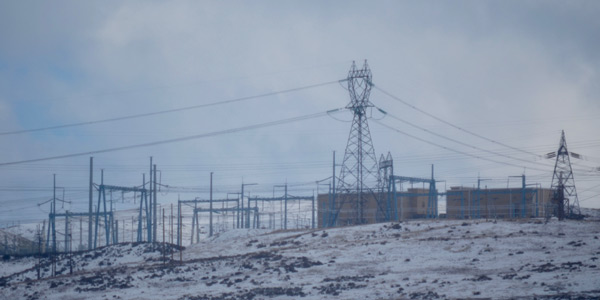By Robert Mullin
CAISO management is considering whether to approve two low-cost transmission upgrade projects using an accelerated procedure that bypasses the usual stakeholder process and the Board of Governors.
One project would entail landscaping changes needed to accommodate an uprate on the Pacific DC Intertie, Southern California’s direct link with hydroelectric generation coming out of the Pacific Northwest.
The other would employ cutting-edge technology to avert the temporary threat of summertime overloading on key transmission lines serving the San Diego area.
CAISO bylaws allow for ISO management to approve projects with capital costs less than $50 million on an expedited basis under conditions in which there is an “urgent” need for the project, coupled with a “high degree of certainty” those projects won’t conflict with other solutions being considered in the normal transmission planning process.
Another requirement is the accelerated timeline must be “driven by the ISO’s evaluation process or external circumstances,” according to CAISO. The process also comes with some obligations on the part of management, including requirements to allow stakeholders to review and comment on the project, followed by a briefing of the board.
The two projects under consideration could receive approval early next month, the ISO said.
External developments are driving the need for the proposed Pacific DC Intertie project, requested by Southern California Edison in response to upgrades performed by the Bonneville Power Administration at the line’s northern terminus at Celilo Station, near The Dalles Dam in Oregon.

Bonneville Power Administration upgrades at Celilo Station — the northern terminus of the Pacific DC Intertie — has prompted CAISO to seek expedited approval for improvements needed at the southern end of the line to allow Southern California to capture the benefits of an uprate. | © RTO Insider
BPA’s improvements have increased the line’s north-to-south transfer capability from 3,100 MW to 3,220 MW. To capture its estimated 60 MW share of the uprate, SoCalEd must pay for its portion of the costs to grade and recontour the land under the southern end of the line, which it owns jointly with the Los Angeles Department of Water and Power (LADWP).
Total costs are expected to come in at less than $1 million. CAISO considers the nudge in capacity to be “extremely cost effective” for SoCalEd — estimated at less than $10/kW.
“We do think it would be a waste not to capture the incremental benefits,” Neil Millar, the ISO’s executive director of infrastructure development, said during an April 25 call to discuss the projects.
“Barring new information to the contrary, the ISO is interested in moving forward with approval” of the intertie project, CAISO has said. SoCalEd expects LADWP to complete the grading work in October.
The proposed San Diego area project is more technologically complex.
San Diego Gas & Electric is seeking to deploy advanced power flow devices on area transmission lines in order to reduce the utility’s local capacity requirements during the summer of 2018.
The utility is concerned that completion of the Sycamore-Penasquitos 230-kV transmission project — recently pushed back from early to late June 2018 — could meet with further delays. That would increase the risk next summer of overloading the Mission-Old Town 230-kV circuit — a pair of lines serving a populous load pocket in the city — under circumstances in which peak loads shift dramatically because of variability in behind-the-meter solar output. CAISO estimates that it could be forced to shed as much as 370 MW of load within 30 minutes of a line outage.
The risk is, in part, being precipitated by the retirement of the 950-MW natural gas-fired Encina power, which could be given an extended life to help mitigate the potential overload problem until the Sycamore-Penasquitos line is energized.
John Jontry, manager of Electric Transmission Grid Planning at SDG&E, noted that keeping Encina’s capacity in reserve would be a costly solution.
“The less generation we have to procure, the less we have to pay,” Jontry said.
The utility is instead proposing using a combination of a portion of Encina generation complemented by power flow control devices installed on the Mission-Old Town line that would, in an emergency, create up to 5 ohms of impedance on the line, forcing flows into other parts of the system.
“The devices push power away from the line to which they are connected,” said Andee McCoy, an executive with Smart Wires, the company that manufactures the equipment.
McCoy added that the “breadth” of the deployment could be correlated with the amount of Encina generation expected to be online next year.
Depending on the number deployed, estimated costs run from $6 million to $12 million, compared with $8 million to $10 million for a phase-shifting transformer and $20 million to $30 million to reconducutor the lines for what is effectively a temporary issue for the utility.
Jontry also lauded the fact that a “big chunk” of the capital costs are covering devices that could be redeployed to other areas when they’re no longer needed for the Mission-Old Town line.
“We’re kind of breaking new ground here because it’s a new way of looking at utility infrastructure,” Jontry said.
CAISO will present the proposed upgrades during the board’s May 1 meeting and will take stakeholder comments until May 2.



